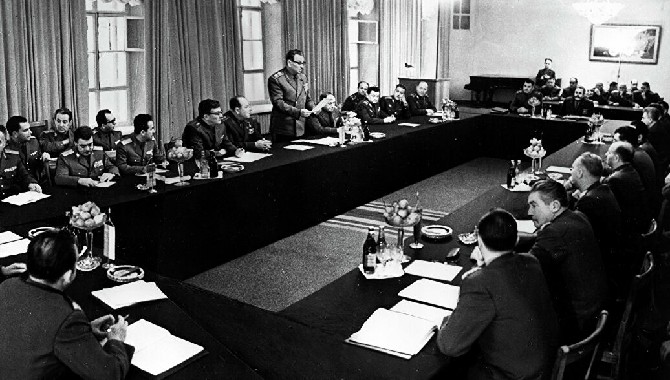
Introduction
The Warsaw Pact, officially known as the Treaty of Friendship, Cooperation, and Mutual Assistance, was a political and military alliance formed in response to the perceived threat posed by the North Atlantic Treaty Organization (NATO) during the Cold War. Established on May 14, 1955, the Warsaw Pact comprised several countries in Central and Eastern Europe, united by their shared commitment to defending socialist and communist ideologies against the Western world, led by the United States and its allies. This article explores the origins, purpose, structure, and ultimate legacy of the Warsaw Pact.
Origins and Context
The aftermath of World War II left Europe divided into two ideological and military blocs. The United States and its Western European allies established NATO in 1949, a defensive alliance aimed at containing the spread of communism. In response, the Soviet Union sought to consolidate its control over Eastern Europe and establish a counterbalance to NATO.
The Warsaw Pact emerged from discussions among the Eastern Bloc nations, orchestrated primarily by the Soviet Union. The key signatories of the treaty were the Soviet Union, East Germany, Poland, Czechoslovakia, Hungary, Romania, and Bulgaria. Albania joined the pact in 1955 but later withdrew in 1968 due to ideological differences with the Soviet Union.
Purpose and Objectives
The primary purpose of the Warsaw Pact was to provide a collective defense mechanism for its member states against any potential aggression from NATO. This included the establishment of a unified military command structure and the stationing of Soviet troops in various member countries. The pact also facilitated economic and political cooperation among its members, further solidifying the Eastern Bloc's unity.
The Warsaw Pact served as a symbol of Soviet dominance in Eastern Europe and a deterrent to any attempts by the Western powers to undermine communist regimes in the region. It allowed for the rapid deployment of Soviet forces in response to perceived threats, such as the Hungarian Revolution in 1956 and the Prague Spring in 1968 when Warsaw Pact troops were used to suppress uprisings in Hungary and Czechoslovakia, respectively.
Structure and Operations
The Warsaw Pact had a hierarchical structure, with the Supreme Commander of the Unified Armed Forces of the Warsaw Treaty Member Countries at its helm. Marshal Ivan Konev served as the first Supreme Commander, followed by other prominent Soviet military figures. The pact's military forces were largely under Soviet command, with the Soviet Armed Forces playing a central role in coordinating defense strategies and providing logistical support.
Each member country maintained its own armed forces, which were integrated into the larger Warsaw Pact framework. While the pact's structure mirrored that of NATO, it was primarily a defensive alliance designed to counter the perceived aggression of the Western powers rather than engage in offensive operations.
Legacy and Dissolution
The Warsaw Pact endured for nearly four decades, but its relevance began to wane in the late 1980s. The end of the Cold War and the process of liberalization known as perestroika in the Soviet Union, led by Mikhail Gorbachev, contributed to a shift in the international political landscape. By 1991, several Eastern Bloc countries, including East Germany, Poland, Czechoslovakia, and Hungary, had undergone significant political transformations, with communist governments giving way to democratic reforms.
In a historic move on July 1, 1991, the Warsaw Pact was officially dissolved during a summit in Prague. This dissolution marked the end of an era in which the pact had played a pivotal role in shaping the geopolitics of Central and Eastern Europe. It also signaled the demise of the Cold War and the beginning of a new era characterized by the expansion of democratic ideals in the region.
Conclusion
The Warsaw Pact, created as a response to the NATO alliance and a tool to safeguard communist interests in Central and Eastern Europe, was a defining feature of the Cold War era. Its existence served as a constant reminder of the ideological and military tensions between the East and the West. While the pact fulfilled its intended purpose of protecting communist regimes, it ultimately succumbed to the winds of change and democratic aspirations that swept across Eastern Europe in the late 20th century. The dissolution of the Warsaw Pact symbolized a new chapter in the region's history, one marked by the pursuit of freedom, democracy, and self-determination.


